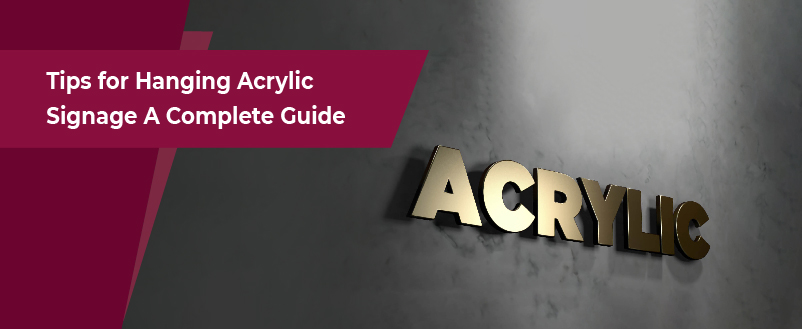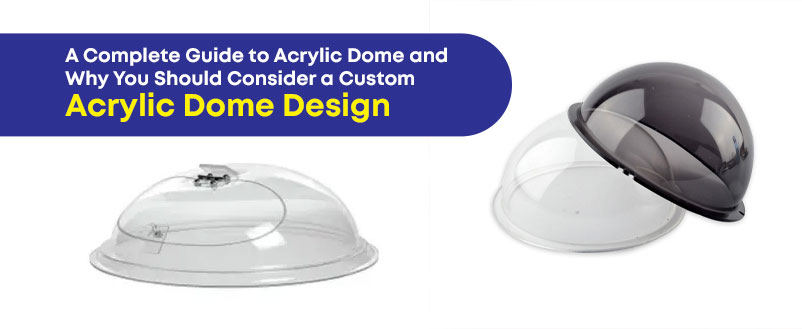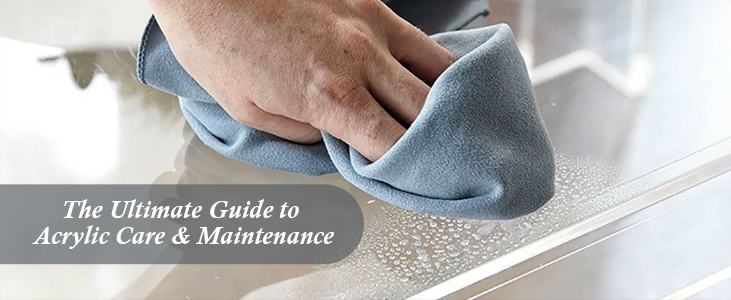
Acrylic signage, crafted from durable and transparent acrylic sheets, offers a sleek and modern way to convey messages, logos, or branding. Its versatility in design and durability makes it a popular choice for businesses, offices, and public spaces. However, achieving its full potential requires more than just quality material—it demands precise installation. Proper hanging not only ensures the aesthetics of the signage but also guarantees its functionality and longevity. There are many other benefits for using acrylic signs. In this guide, we will explore the essential steps and considerations for hanging acrylic signage effectively, from selecting the right hardware to maintenance tips for enduring appeal.
Table of Content
How to hang acrylic signs?
To hang outdoor signage effectively, there are wide range of suitable hardware such as standoffs, edge grips, or cable systems based on weight capacity and aesthetic preferences. First select precisely and then measure and mark the wall for precise placement, ensuring proper alignment and spacing. Use a drill to create holes according to the chosen hardware’s specifications, then install the hardware securely. Finally, attach the acrylic sign to the installed hardware, ensuring it is level and secure. Regularly check the signage and hardware for stability and make adjustments as needed for a long-lasting and visually appealing display.
Choosing the Right Hardware for acrylic signs hanging
Choosing the right hardware and high-quality sign holders is paramount when it comes to hanging acrylic signage effectively. The hardware not only supports the weight of the signage but also contributes to its overall aesthetic appeal. There are several types of hardware commonly used for mounting acrylic signage such as floor-standing sign holder and freestanding sign holders, each offering unique advantages and considerations.
Types of hardware suitable for acrylic signage:
Standoffs: Standoffs are popular hardware and choices for acrylic signage due to their sleek and modern appearance. These cylindrical or barrel-shaped components are typically made of metal, such as stainless steel standoffs or aluminium. These stainless steel standoffs come in various sizes and finishes and also double-sided sign holders are available. Standoffs create a standoff distance between the wall and the acrylic, giving the signage a floating effect that enhances its visual impact.
Edge grips: Edge grips, also known as edge-grip standoffs or edge-mount standoffs, provide a minimalist and unobtrusive mounting solution for acrylic signage. These hardware components clamp onto the edges of the acrylic panel, securing it firmly in place while minimising visual distractions. Edge grips are available in different materials, such as stainless steel or plastic depending on the range of applications, and can be installed horizontally or vertically depending on the orientation of the signage. It is suitable for larger signs and LED sign. Materials should be chosen based on the temperatures, in some locations , there will be extreme temperature so choose materials accordingly.
Cable systems: Cable systems are the common types and offer a versatile and customizable way to suspend acrylic signage from ceilings or walls. These systems consist of stainless steel cables that are attached to ceiling or wall mounts and adjustable cable grippers that hold the signage in place. Cable systems allow for easy adjustment of the signage’s height and positioning, making them ideal for creating dynamic displays in retail or exhibition environments.
Factors to consider when selecting hardware:
Weight capacity: One of the primary considerations when choosing hardware for acrylic signage is its weight capacity. It’s essential to select hardware that can adequately support the weight of the signage, including the acrylic panel and any additional elements, such as graphics or lighting fixtures. Exceeding the weight capacity of the hardware can compromise its integrity and lead to potential safety hazards.
Aesthetic appeal: The hardware selected should complement the overall design aesthetic of the acrylic signage and its surroundings. Consider factors such as the finish, shape, and size of the hardware to ensure that it enhances the visual impact of the signage rather than detracting from it. Choose services for Acrylic design in Dubai to enhance the aesthetics of boards and make stunning acrylic signs. For example, sleek and minimalist hardware may be more suitable for contemporary environments, while ornate hardware may be preferred for more traditional settings.
Installation method: Different types of hardware require different signage installation methods, so it’s essential to consider the ease and feasibility of installation. Some hardware may require drilling holes into the wall or acrylic panel, while others may utilise adhesive or magnetic mounting systems. Business owners can choose hardware that aligns with the available installation resources and expertise to ensure a smooth and secure mounting process. Also consider environmental conditions, it the environment shows harsh conditions, select installation methods accordingly.
Pre-Installation Preparation
Preparation is key for successfully hanging acrylic signage. Follow these steps to ensure a smooth pre-installation process:
- Measuring and marking the wall:
Begin by measuring the wall space where you intend to hang the acrylic signage. Use a tape measure to determine the desired height and width for the display. Mark the wall lightly with a pencil to indicate the exact placement of the signage, ensuring it is centred and aligned with surrounding elements.
- Determining the placement and orientation of the signage:
Consider factors such as visibility, accessibility, and aesthetic appeal when determining the placement and orientation of the acrylic signage. Acrylic UV printing services in Dubai provides printing of acrylic signage board on the desired colour. Take into account the viewing angles and traffic flow within the space to ensure maximum impact. Additionally, consider whether the signage will be mounted horizontally or vertically based on its design and intended message.
- Gathering necessary tools and materials:
Before beginning the installation process, gather all the tools and materials required for hanging acrylic signage. Essential items include:
- Drill: Choose a drill with the appropriate size drill bit for the hardware being used. Ensure the drill is fully charged or has a power source nearby for uninterrupted use during installation.
- Level: A level is essential for ensuring the acrylic signage is mounted straight and level on the wall. Use a bubble level or digital level to check for accuracy during installation.
- Screws and anchors: Select screws and anchors suitable for the type of wall material (e.g., drywall, concrete, wood) and the weight of the acrylic signage. Choose anchors that provide sufficient support to prevent the signage from sagging or falling over time.
- Templates (if provided with hardware): Some hardware may come with templates to facilitate accurate drilling and installation. Use these templates to mark the drill hole locations on the wall, ensuring precise alignment and spacing between mounting points.
By following these pre-installation steps and gathering the necessary tools and materials, you can ensure a seamless and successful hanging process for your acrylic signage. Acrylic laser cutting service in Dubai helps in customising the signage board in required size.
Installation Process
Installing acrylic signage involves several steps to ensure a secure and visually appealing display. Follow this step-by-step guide for a successful installation:
- Step-by-step guide for installing acrylic signage:
- Marking drill holes: Using a pencil and a level, mark the locations for drill holes on the wall according to the measurements and placement determined during the pre-installation preparation. Ensure the marks are accurately aligned and spaced to accommodate the chosen hardware.
- Pre-drilling holes: With the appropriate drill bit size, carefully drill pilot holes at the marked locations on the wall. Take care to drill to the appropriate depth based on the length of the screws and anchors being used. Use caution to avoid damaging the wall or acrylic sheet.
- Installing hardware: Insert anchors into the drilled holes, tapping them gently with a hammer if necessary to ensure a snug fit. Next, attach the chosen hardware—such as standoffs, edge grips, or cable systems—to the anchors using screws or bolts provided. Tighten the hardware securely to the wall, ensuring it is level and aligned with the markings.
- Attaching the acrylic signage: With the hardware securely installed, carefully position the acrylic signage over the protruding hardware. Depending on the type of hardware used, align the holes or slots on the signage with the corresponding mounting points. Secure the signage in place by tightening the hardware or inserting screws through the pre-drilled holes.
Tips for a smooth installation process:
- Double-checking measurements: Before drilling any holes, verify the accuracy of the measurements and markings to avoid errors during installation. Measure multiple times to ensure precise alignment and spacing.
- Using a level to ensure proper alignment: Throughout the installation process, use a level to check the alignment of both the hardware and the acrylic signage. Adjust as necessary to ensure the signage is mounted straight and level.
- Enlisting the help of another person for larger signage: For larger acrylic signage boards, consider enlisting the assistance of another person to help with positioning and holding the signage in place during installation. This can help prevent accidents and ensure a smooth installation process.
By following these steps and tips, you can achieve a professional and secure installation of acrylic signage. For quality acrylic signage board suppliers in Dubai, consider reputable suppliers who offer high-quality materials and reliable hardware for your installation needs.
Conclusion
Hanging acrylic signage is a meticulous process that requires careful consideration of hardware selection, precise installation techniques, and ongoing maintenance. By choosing the right hardware and following a systematic installation approach, you can create visually striking displays that enhance the aesthetics and functionality of any space.
Regular maintenance and periodic checks ensure the longevity and integrity of the signage. For reliable acrylic sheet suppliers in Dubai, prioritise reputable vendors offering high-quality materials and comprehensive support. With attention to detail and proper care, acrylic signage can effectively convey messages and elevate the atmosphere of any environment.
also read: benefits for using acrylic LED signs

